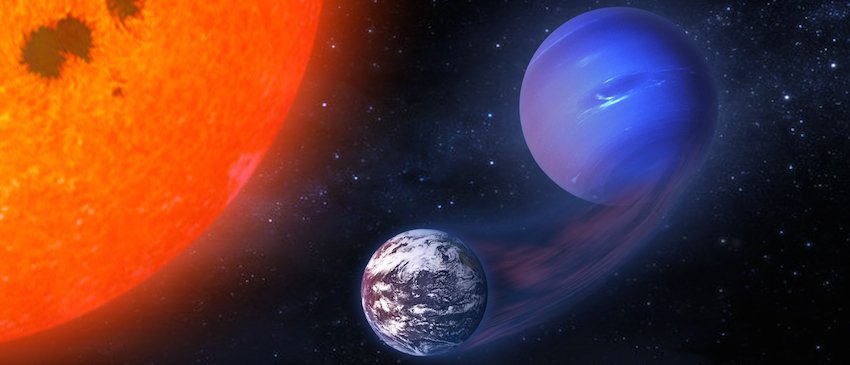
Dec. 3, 2019
Research Highlight
To the Core of Sub-Neptunes
Improving estimates of Earth-size planets in the habitable zones of nearby stars.

Strong irradiation from the host star can cause planets known as mini-Neptunes in the habitable zone to shed their gaseous envelopes.Image credit: Rodrigo Luger / NASA.
A recent study supported in part by the NASA Astrobiology Program provides new insight into how common Earth-sized planets could be in the habitable zone of nearby, Sun-like stars. Currently, the potential number of such planets is not well understood, and researchers have been working toward producing more accurate estimates. The new study examines the potential ‘contamination’ of these estimates by sub-Neptune planets that have been stripped down to their cores.
Accurately estimating the frequency of Earth-size planets in the habitable zone is important in determining whether or not any habitable planets might be in orbit around nearby stars, and could inform the development of future missions. Determining how many of these Earth-sized worlds might in fact be the stripped cores of sub-Neptune planets will help astrobiologists identify truly Earth-like worlds in the search for life beyond our solar system.
The study, “The Impact of Stripped Cores on the Frequency of Earth-size Planets in the Habitable Zone,” was published in The Astrophysical Journal Letters. The work was supported by the Nexus for Exoplanet System Science (NExSS). NExSS is a NASA research coordination network supported in part by the NASA Astrobiology Program. This program element is shared between NASA’s Planetary Science Division (PSD) and the Astrophysics Division. This research is a critical part of NASA’s work to understand the Universe, advance human exploration, and inspire the next generation. As NASA’s Artemis program moves forward with human exploration of the Moon, the search for life on other worlds remains a top priority for the agency.